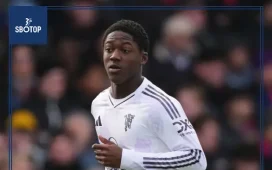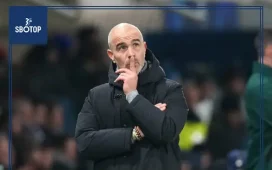When two historic clubs meet, especially under the bright lights of a high-stakes league match, the result is rarely predictable. The clash between Wrexham AFC and Sheffield Wednesday lived up to every expectation, producing drama, tension, and a final scoreline that perfectly captured the spirit of the game: a pulsating 2-2 draw.
For Wrexham, a club rejuvenated by Hollywood ownership and rising ambitions, the match was an opportunity to stamp authority against a seasoned Championship-level opponent. For Sheffield Wednesday, struggling with form and managerial pressure, it was a battle for pride and momentum. By the end of ninety rollercoaster minutes, both sides left with points shared, but the Owls’ late fightback ensured that they carried home the moral victory.
Wrexham’s Rise and Sheffield’s Struggles
Before diving into the match itself, the narrative arc of both clubs heading into the fixture deserves attention. Wrexham’s meteoric journey has been one of football’s most fascinating stories. After years languishing in the National League, the takeover by Ryan Reynolds and Rob McElhenney injected not only resources but also global attention. Their return to the Football League sparked optimism, and the match against Sheffield Wednesday was seen as a measuring stick of just how far they had come.
Sheffield Wednesday, on the other hand, entered the game with shadows of doubt. Having battled inconsistency throughout the campaign, the Owls faced immense pressure. Fans voiced their frustration at missed chances, defensive lapses, and a lack of cutting edge in attack. This match was billed as an opportunity for redemption—a chance to show resilience against one of the most in-form rising clubs.
First Half Wrexham Dictate the Tempo
From the opening whistle, Wrexham made it clear they were not intimidated by the history or stature of their opponents. The Red Dragons surged forward with energy, pressing high and forcing mistakes from the Sheffield Wednesday backline.
It didn’t take long for the breakthrough to arrive. In the 14th minute, Paul Mullin, Wrexham’s talismanic striker, pounced on a defensive error. A loose clearance fell kindly to his feet, and with his trademark composure, he rifled the ball into the bottom corner, sending the Racecourse Ground into a frenzy.
The goal was emblematic of Mullin’s role as Wrexham’s heartbeat. His work rate, eye for goal, and ability to exploit defensive frailties have made him the symbol of Wrexham’s resurgence. Sheffield Wednesday, already low on confidence, looked rattled.
Wrexham continued to dominate possession. Their midfield trio, led by Luke Young, controlled the tempo, threading incisive passes and preventing Sheffield Wednesday from building rhythm. The Owls looked passive, relying on long balls that were easily dealt with by Wrexham’s organized backline.
By the 33rd minute, Wrexham doubled their lead. This time it was Elliot Lee who found space at the edge of the penalty area. A quick exchange of passes opened up a gap, and Lee curled a delightful effort into the top corner. The stadium erupted once more, and it seemed as though Wrexham were on course for a famous victory.
As the halftime whistle blew, Wrexham were two goals to the good, deservedly so. Sheffield Wednesday trudged into the dressing room facing boos from their traveling fans.
Half-Time Reset Wednesday’s Response
Sheffield Wednesday manager, under immense scrutiny, knew something drastic had to change. The halftime team talk, as revealed later in interviews, focused on pride, belief, and fighting spirit. The Owls were reminded of their heritage and the need to respond.
The introduction of fresh legs also shifted the momentum. A tactical switch from a cautious 4-4-2 to a more aggressive 4-3-3 gave the visitors additional width and attacking impetus. The game was far from over.
Second Half The Owls Take Flight
From the restart, Sheffield Wednesday looked transformed. They pressed higher, moved the ball quicker, and suddenly asked questions of Wrexham’s defense. The home side, perhaps guilty of complacency, began to retreat deeper, inviting pressure.
In the 58th minute, Sheffield Wednesday pulled one back. Barry Bannan, the veteran midfielder and captain, produced a moment of brilliance. Collecting the ball outside the box, he spotted the goalkeeper slightly off his line and unleashed a dipping strike that sailed into the net. The away fans roared to life, and the belief coursed back into the team.
Wrexham, shaken but not broken, attempted to regain control. Mullin had another chance in the 67th minute, but his low shot was superbly saved by the Owls’ goalkeeper. That miss would prove costly.
As the game entered its final quarter, Sheffield Wednesday continued to pile on pressure. The equalizer came in the 82nd minute. A well-worked move down the right flank saw a cross whipped into the box. Substitute Carlton Palmer rose highest, nodding the ball past the stranded Wrexham keeper. From 2-0 down, the Owls had clawed their way back to 2-2.
Late Drama but No Winner
The closing minutes were chaotic. Wrexham, spurred by their passionate supporters, pushed for a late winner. Mullin had another half-chance, and Ollie Palmer saw a header drift just wide. Sheffield Wednesday, riding their wave of momentum, also had opportunities, with Bannan nearly bagging a second goal from distance.
Despite both teams’ efforts, the final whistle blew with the score locked at 2-2. For Wrexham, it felt like two points lost after surrendering a comfortable lead. For Sheffield Wednesday, it was a point gained and a symbolic demonstration of their resilience.
Tactical Breakdown
-
Wrexham’s Approach
-
-
- Strengths: High pressing, clinical finishing in the first half, and the individual brilliance of Mullin and Lee.
- Weaknesses: Dropped intensity after halftime, lack of defensive adjustments to Sheffield Wednesday’s tactical changes.
-
-
Sheffield Wednesday’s Approach
- Strengths: Tactical flexibility, leadership from Bannan, and the impact of substitutions.
- Weaknesses: Poor defensive organization in the first half, slow build-up play before halftime.
The tactical battle underscored the importance of adaptability in football. Wrexham’s inability to maintain control contrasted with Sheffield’s determination to claw back into the match.
Player Performances
- Paul Mullin (Wrexham): Outstanding in the first half, his goal set the tone. However, missed chances in the second half proved pivotal.
- Elliot Lee (Wrexham): His strike was sensational, but his influence waned as Wednesday dominated later stages.
- Barry Bannan (Sheffield Wednesday): Inspirational captain’s performance, his goal sparked the comeback.
- Carlton Palmer (Sheffield Wednesday): Super-sub who delivered the crucial equalizer.
- Luke Young (Wrexham): Controlled the midfield in the first half but struggled against the second-half press.
Also Read:








